In 2012, a group of Friends of One Mile Creek (FOMC) volunteers led by Gerry Benateau created a large buffer/pollinator garden at the top of the hill abutting One Mile Creek on the public land at 433 William Street (behind the small building for William Street pumping station). Today the area is a public park, but in the 1940s it was the Town Dump. The restoration of the park from a landfill to a nature habitat took several years, but today – less than a decade later – it is looking spectacular.
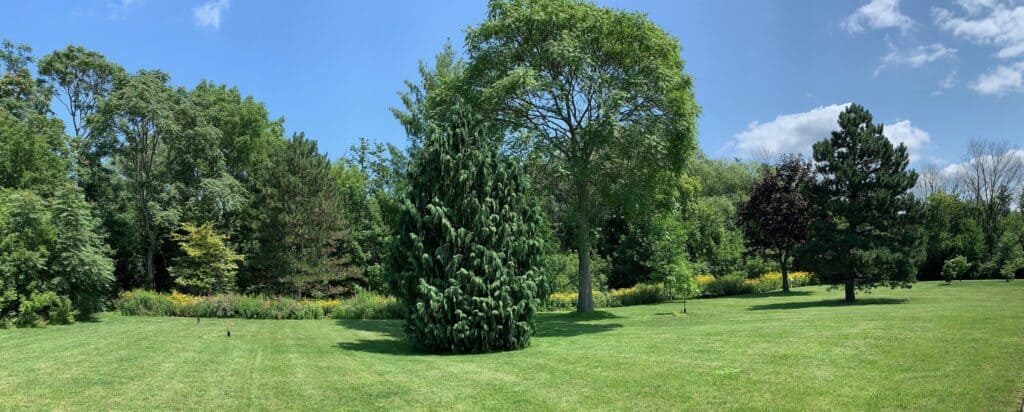
The 2012 planting included 50 native trees and shrubs along the top of the hill. The following year, sod was stripped in front of the trees to plant the huge pollinator garden with more than 2,000 plugs of native wildflowers. It is one of the largest deliberately planted wildflower pollinator gardens in Niagara on the Lake, stretching for 200 feet (61 metres). An interpretive sign was added in 2014 and more trees planted in 2016 thanks to a TD grant.
With the plantings we demonstrated the best practice for a riparian zone is to have trees and flowers along the edge of the creek rather than grass that runs to the waters’ edge. The trees, shrubs and flowers intercept rainfall, providing a natural buffer for water infiltration and encourage biodiversity.
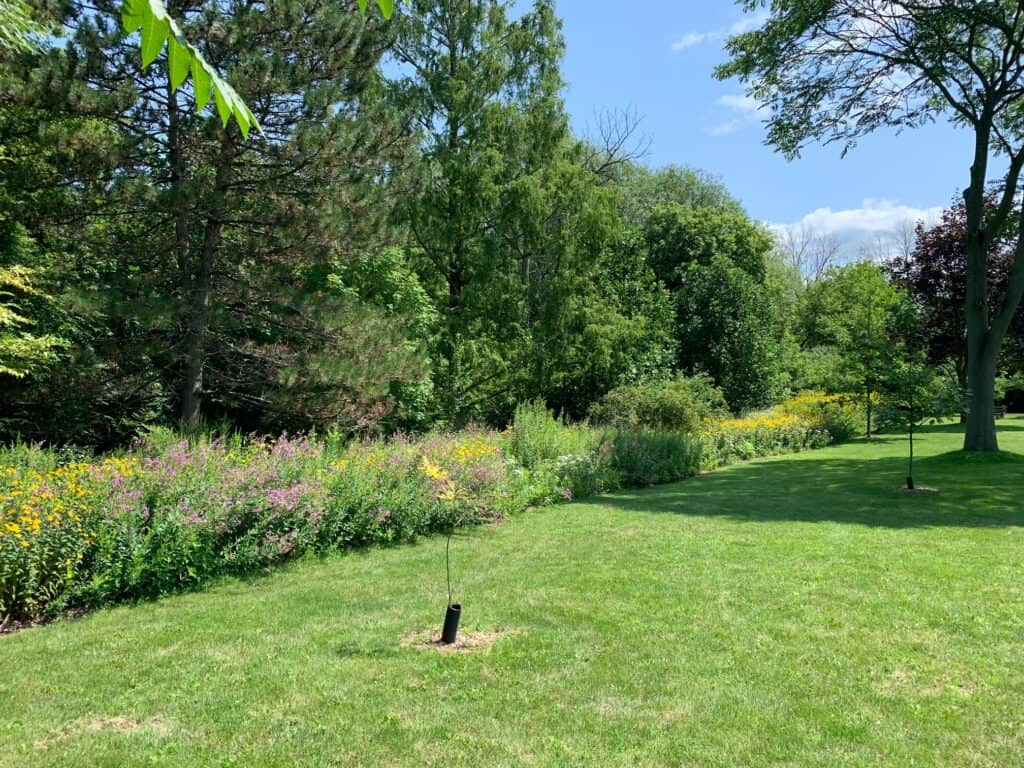
FOMC continues to maintain the gardens with regular cleanups organized by Klara Young-Chin with volunteers arranged by the Niagara Penninsula Conservation Authority (NPCA) If you want to help maintain the garden, let us know. In 2021, we’ve had help from Town staff to remove invasive trees.
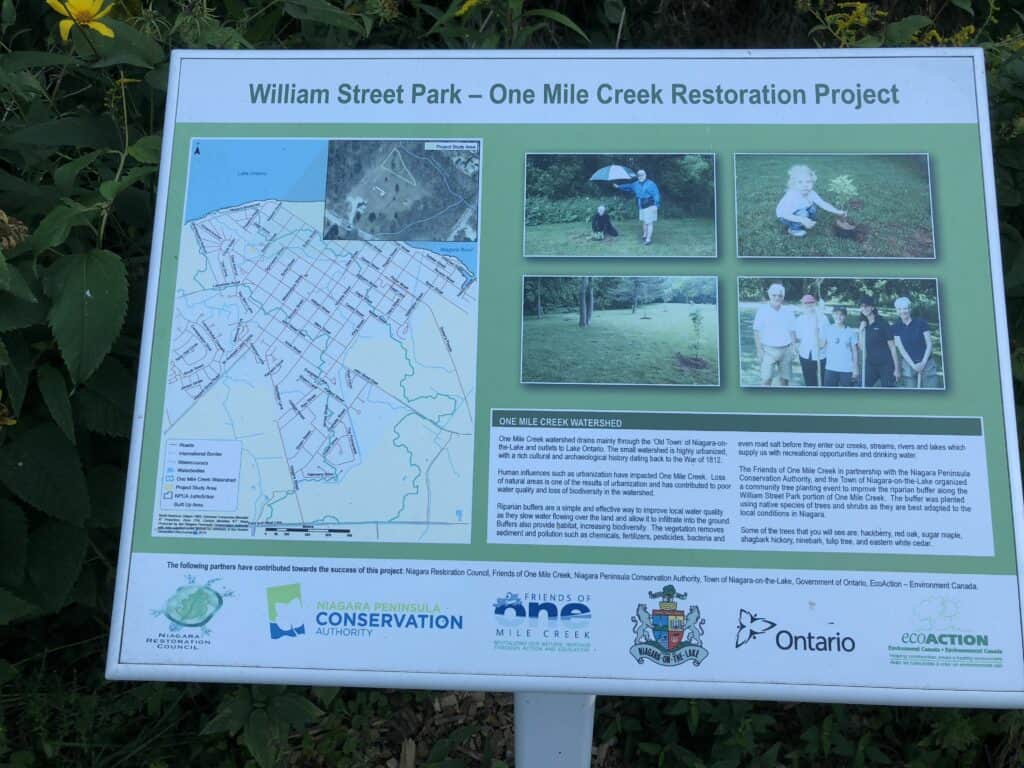
The trees introduced by FOMC have been native species such as hackberry, red oak, sugar maple, shagback hickory, ninebark, tulip tree and eastern white cedar. However, in this newly forested area there also is biodiversity: there’s a fine specimen of what appears to be a dawn redwood (Metasequoia glyptostroboides).
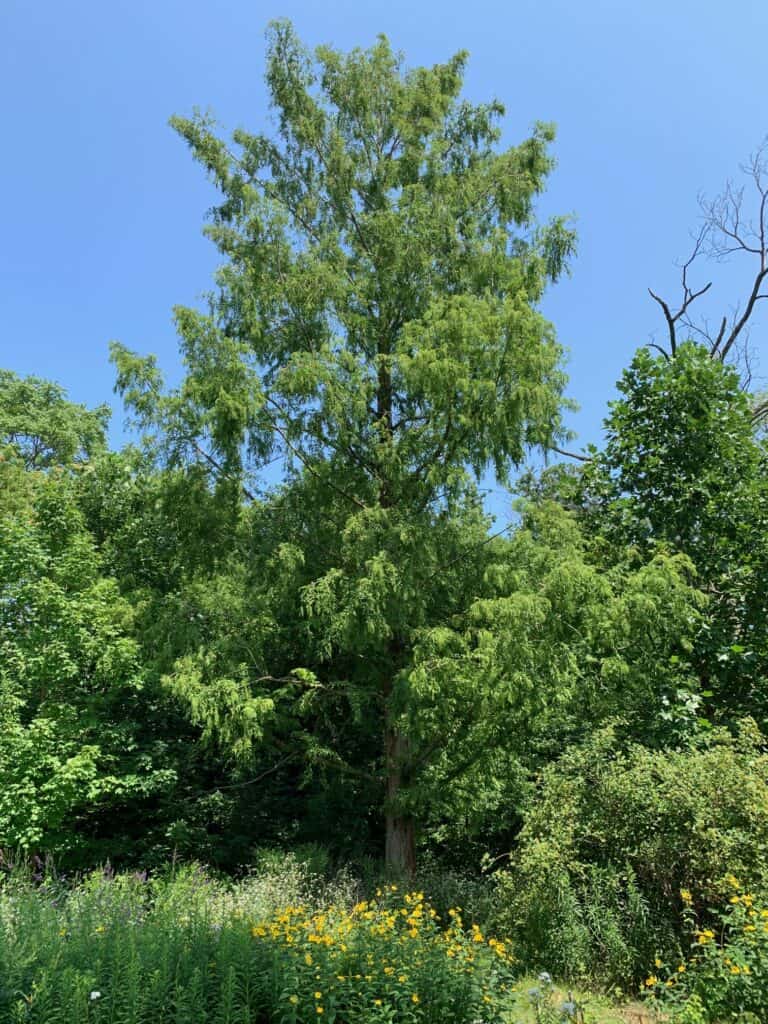
More photos of William Street pollinator garden
Photos provided by Chris Earl who visits park on regular basis.
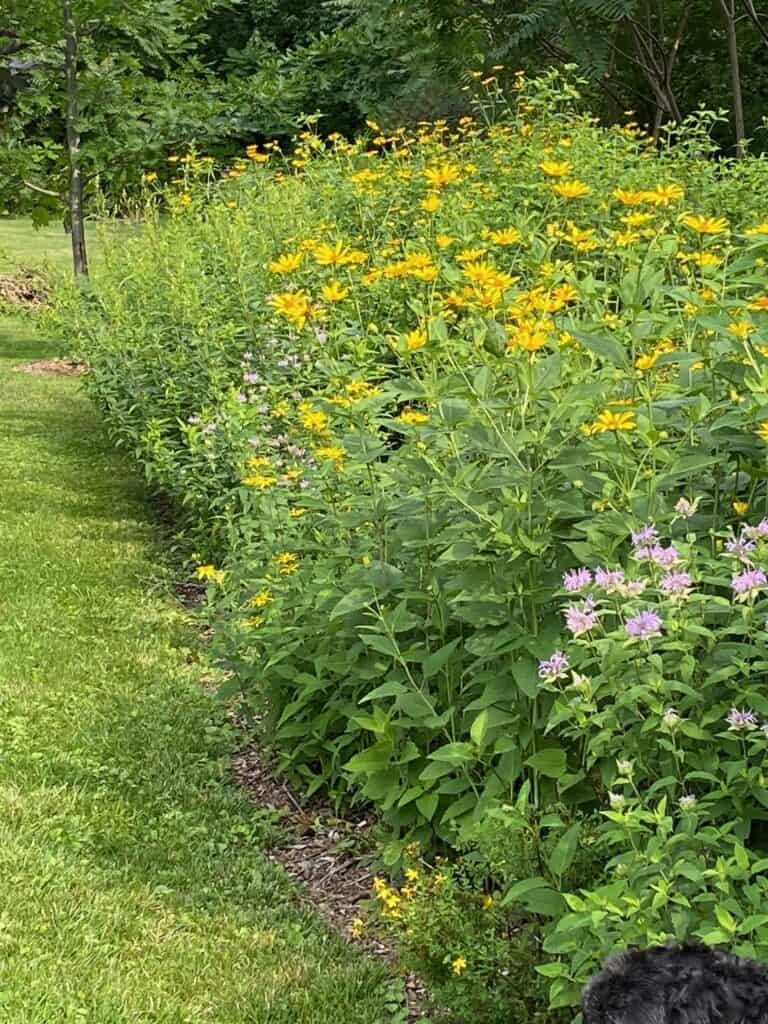
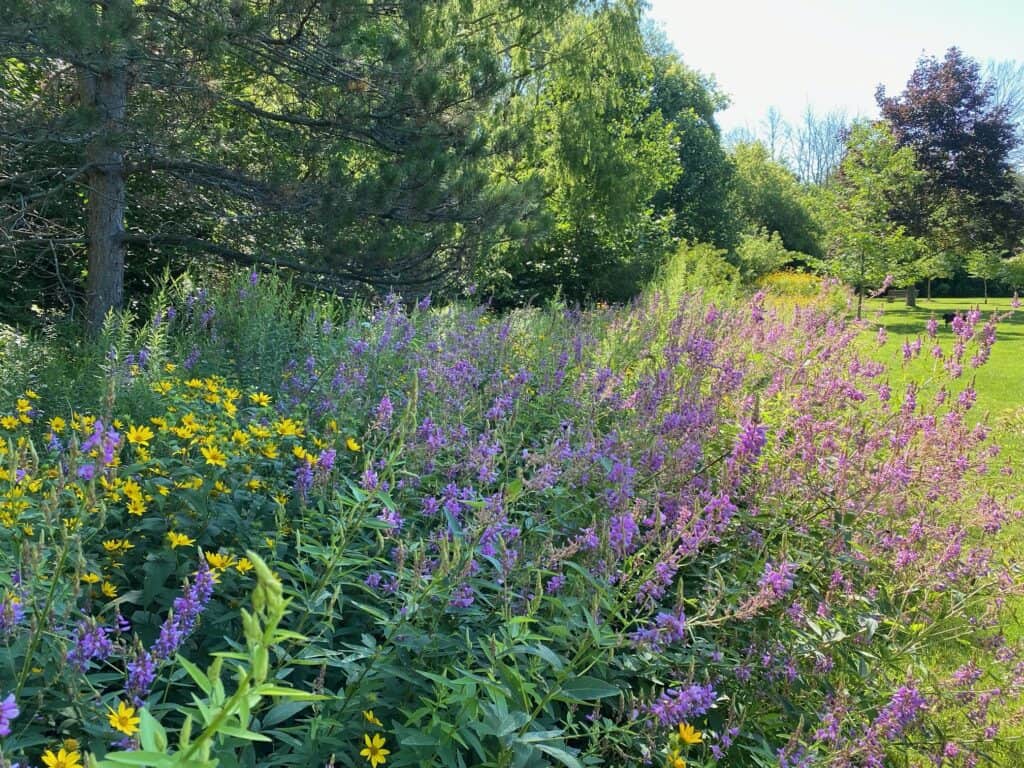

Some images from the first William Street plantings
When you visit the park today, compare what you see to what it looked like in 2012 when volunteers started the restoration.

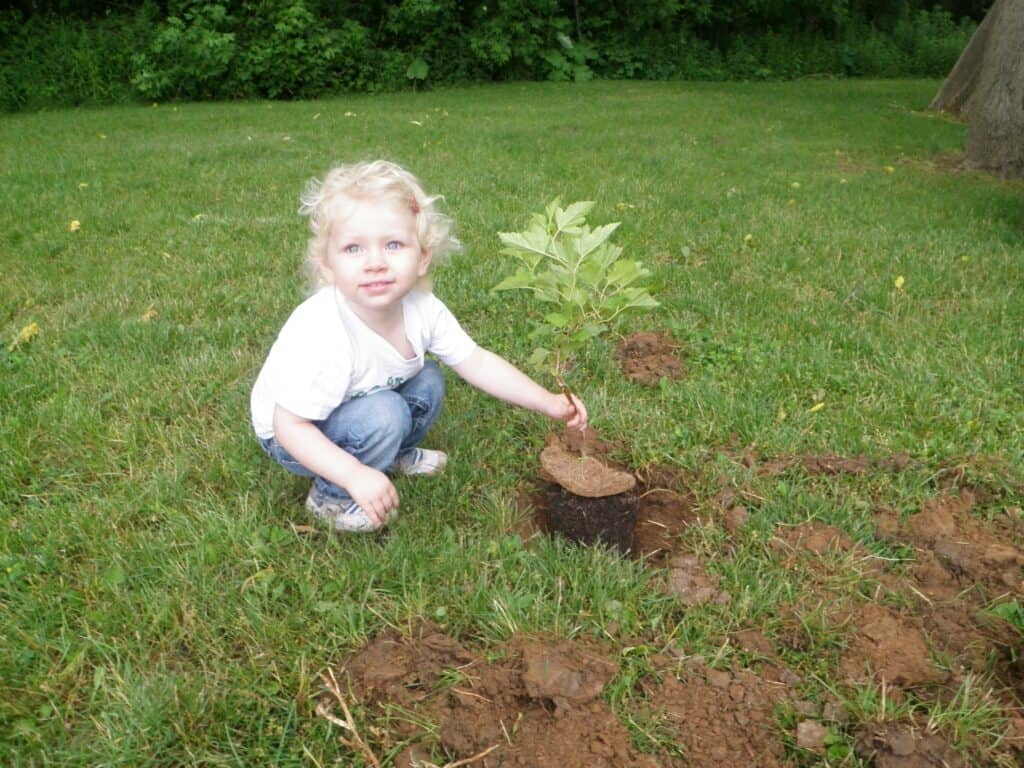
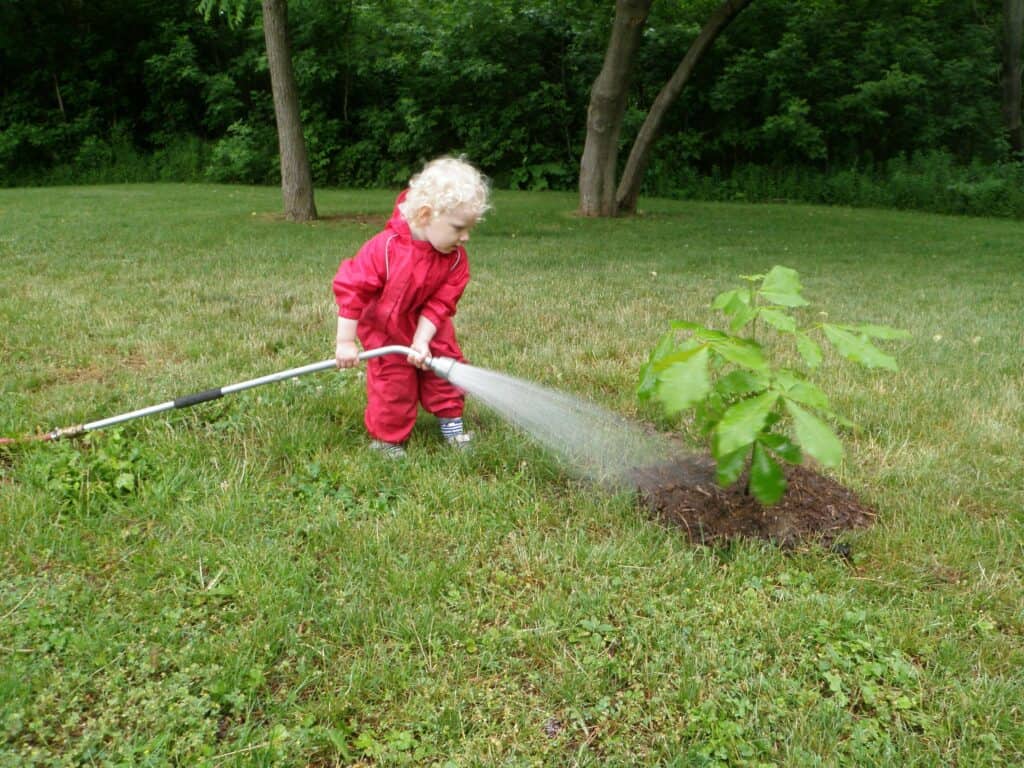

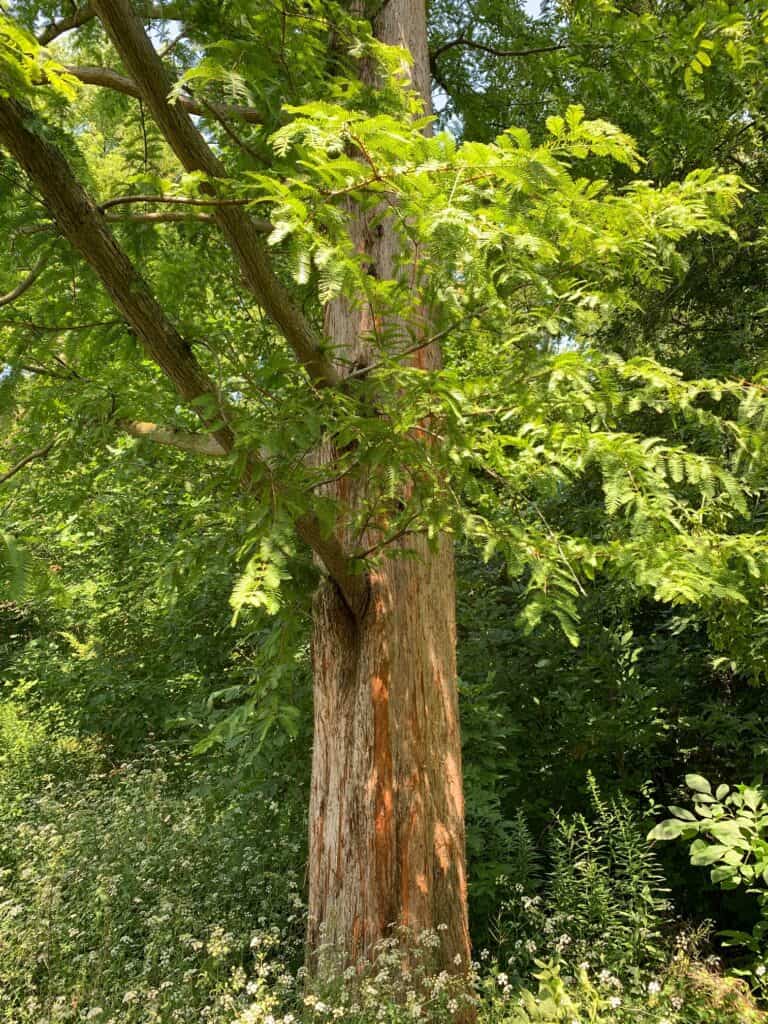
Leave a Reply